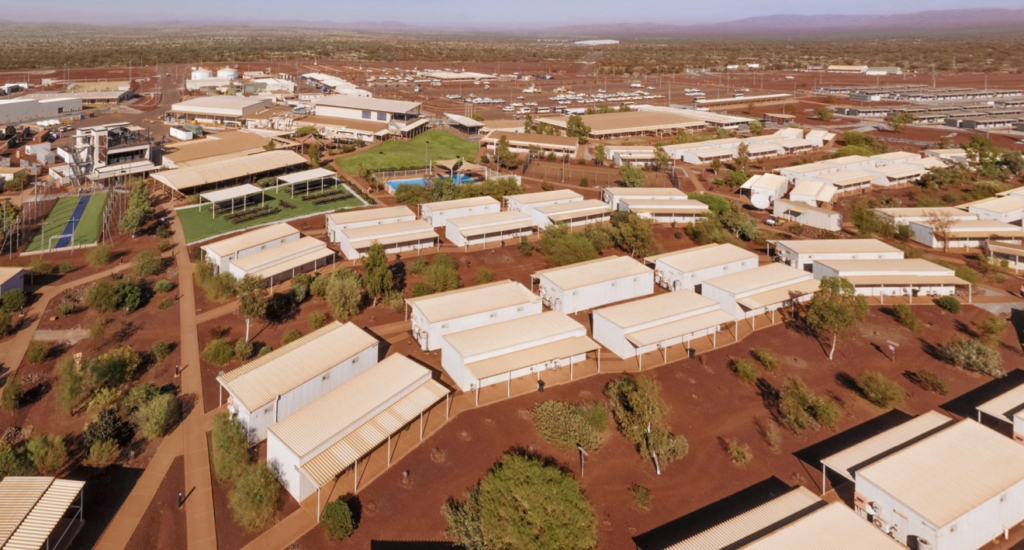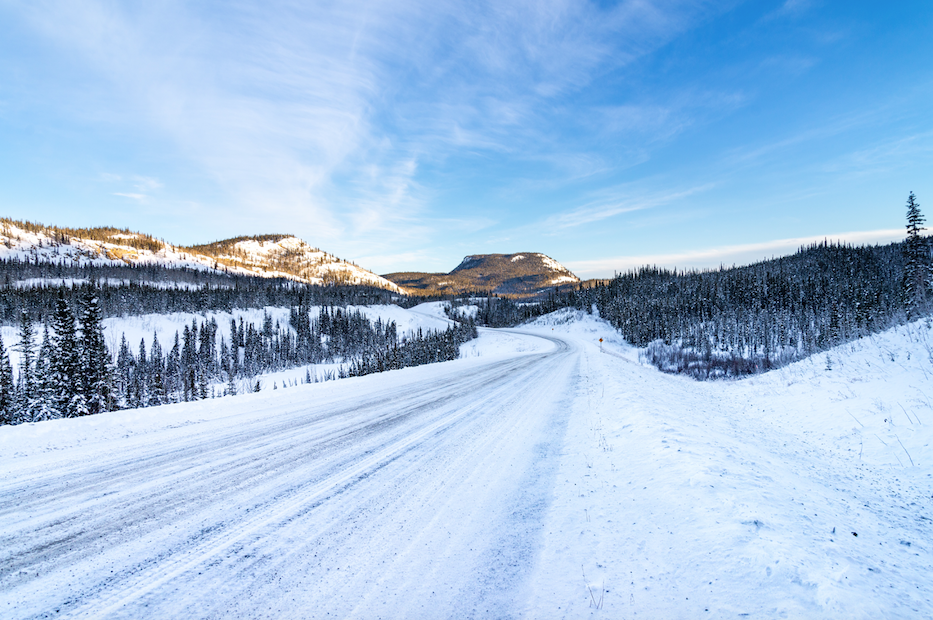Iron ore miners lure workers to outback with resort-style living
Bloomberg News | September 24, 2021 |

Mulla Mulla camp. Image by BHP.
In the outback’s blistering-hot mining sites, the hours are long and the flies relentless. Now, in a bid to attract skilled workers and overcome a labor supply crunch, Australia’s iron ore companies are turning to Olympic-sized swimming pools, virtual golf arcades and fine dining.

When production starts at Mineral Resources Ltd.’s Ashburton iron ore hub around mid-2023, staff will be offered what it calls resort-style accommodation twice the size of the industry average, featuring a queen-sized bed, kitchen and lounge areas. And to overcome the strains of working remotely, a full-time mental health consultant will be on hand.
“We want to figure out how to make sure we keep the people that are working for us with us until they retire,” the company’s chief executive, Chris Ellison, said.
Meanwhile, the mining giants are also upping their game. BHP Group’s South Flank, which started production in June, features a worker village with a pool, tennis and squash courts, an indoor golf range and a range of bars and restaurants.
A RECENT REPORT SHOWED WESTERN AUSTRALIA’S RESOURCES INDUSTRY NEEDS TO ATTRACT AS MANY AS 40,000 EXTRA WORKERS OVER THE NEXT TWO YEARS
And Rio Tinto Group is seeking workers for its $2.6 billion Gudai-Darri project, due to start early next year, promising them comfortable living and high-speed connectivity at a site where workers will “genuinely respect each other.”
It’s a far cry from the industry’s traditional image of so-called fly-in, fly-out workers — flown in to work at mines in the desert for weeks at a time — being offered accommodation in sites resembling testosterone-fueled, heavy-drinking boot-camps, and sleeping in tiny rooms known as dongas after grueling 12-hour shifts.
The industry is also trying to clean up its sites after coming under attack due to sexual harassment claims made by women. BHP fired dozens of workers after it verified the claims, including substantiated allegations of rape. Rio also responded with steps to improve safety for female workers at its mines, including a buddy system, greater supervision and training, shorter rosters and a four-drink daily limit on alcohol consumption. BHP also has a four-drink cut-off at its sites.
“We’re trying to soften the sites down to attract a more diverse workforce,” Ellison said.
Mining companies know the ability to attract workers to their sites, and then keep them, is crucial. Despite an historic crash in iron ore prices this week to a 16-month low of $90, major miners like BHP and Rio still profit given their cost of production can be less than $20 per tonne.
They’re also used to volatile prices swings, so their hunt for talent is unlikely to change for now. Iron ore is responsible for about a third of Australia’s export revenue, or a record A$152 billion ($110 billion) in the year to June 30. while the industry employs around 280,000 people.
A recent report showed Western Australia’s resources industry needs to attract as many as 40,000 extra workers over the next two years or risk delays and potential postponement of some A$140 billion in projects. That challenge has been further complicated by the state’s border closures to keep out covid-19, while workers are also often headhunted to work in high-skilled industries such as tech and finance, despite being offered wages around double the national average at the mines.
For Mineral Resources, it’s not only about attracting and keeping the best workers: Ellison says it’s just as important to provide a safe and comfortable environment which supports the mental well-being of employees. The company is breaking the mold by planning to build accommodation to suit couples and families, seeking to get them to permanently reside and play an active part in the local community.
Still, the bulk of Western Australia’s mining-site workforce is destined to remain tied to their homes and families based hundreds of miles away, and from whom they need to remain physically distanced from for sometimes weeks at a time. Mineral Resources’ head of mental health, Chris Harris, said fly-in, fly-out workers suffered twice as much psychological distress as other Australian workers.
“Some of those challenges are just the nature of sector,” Harris said. “The question is: how do we support people to navigate those challenges?”
(By James Thornhill)














